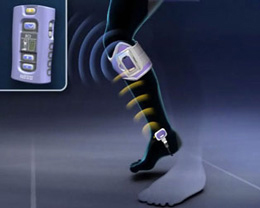
Called the NESS L300 neuro-rehabilitation system, this device is available only at the Cornell University Weill Medical Center.
The NESW L300 device is worn on the lower-leg and foot in place of a traditional foot brace. It contains sensors that detect whether the patient’s foot is in the air or on the ground.
Electrodes that transmit painless electrical stimulation to the peroneal nerve to activate the calf muscle and correct the wearer’s gait.
Doctors at the medical centre have also shown that the device improves walking co-ordination, speed and blood flow, and also decreases the effort required in walking.
It is said that the device could also be beneficial in treating patients with traumatic brain injury, multiple sclerosis and cerebral palsy.
The NES L300 device has been manufactured by California-based Bioness Inc.
“Our patients have been very enthusiastic about this remarkable device, which, together with a comprehensive rehabilitation regimen, has helped them retrain and regain control of their bodies and achieve greater mobility and independence,” says Dr. Michael O’Dell, acting chief of rehabilitation medicine and medical director of the Inpatient Rehabilitation Medicine Center at NewYork-Presbyterian/Weill Cornell.
However, boffins agree that further research is required to determine the specific long-term benefits of the NESS L300 device.
